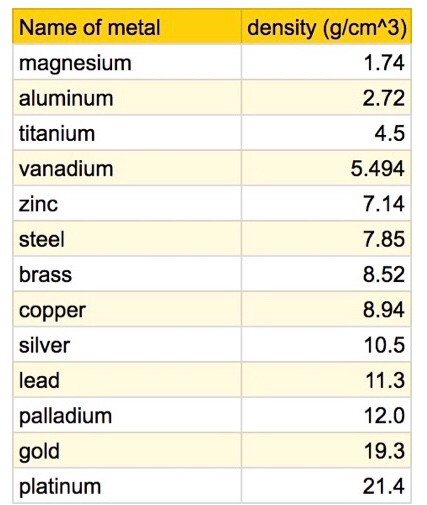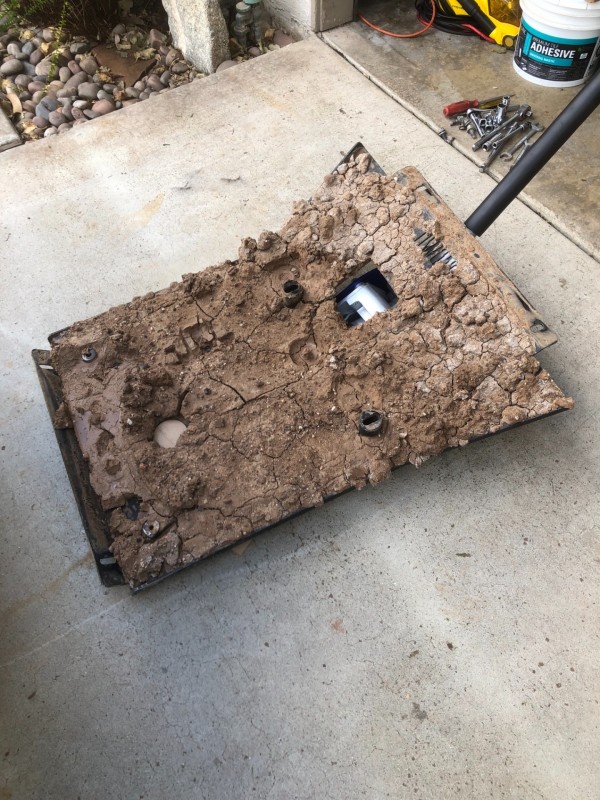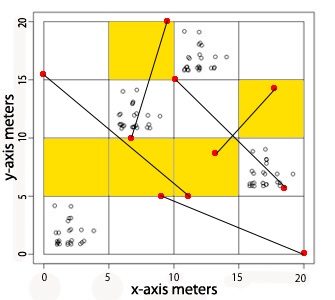-
Posts
1,097 -
Joined
-
Last visited
Content Type
Forums
Detector Prospector Home
Detector Database
Downloads
Everything posted by GotAU?
-
Is that about nuclear fusion where two or more lighter atomic nuclei are combined to for a new heavier element? That does occur in stars forming the lighter elements, but there's only one [natural] way to make gold and the heavier elements from other lighter elements, and it isn't in Earth or from our Sun (luckily!). The latest and most accepted theory with direct evidence is from colliding neutron stars, the ones that death spin into each other. Radioactive decay in the Earth formed Argon, lead and other elements from heavier ones, but it always forms lighter, more stable nuclei as an end product.
-
I think he meant does the GPX6000 with its DD coil discriminate as well as the the GPX5000 with its DD coil.
-
A small piece I cut off of a bar of ivory soap, whittled down to a wedge, stopped the gas leak on my truck when the tank was punctured. Fuel and oil wont dissolve soap, so it makes for a good emergency plug. Saved the day for some more fun out there!
-
That sounds like a double downer, “not today honey, check back maybe in another week...”😆
-
Do they pay you to wear that billboard? 😄The hat is great, however as for the shirt, do they pay you to wear that advertisement?🤑
-

Is This A Platinum Nugget Or Ore At All??
GotAU? replied to MissRockhound's topic in Rocks, Minerals, Gems & Geology
Slag (in geological terms) is the stony leftover material after ore has been smelted. This sample looks too metallic and could be melted aluminum, tin, pewter or a type of metal alloy melted after a fire of some sort. The holes in it are not common in meteorites. I think KAC is on the right track identifying it, something left over from a human cause like a furnace or maybe even a structure or trash dump fire. Another good measurement to get for it is density, If you have a graduated cylinder or another way to estimate the volume, use it to find the volume (the easiest is to find the displacement of water in cc’s using a graduated cylinder) and divide the weight by volume, g/cc. This will make it easier to identify the metal. Platinum is denser than gold, at 21.4 g/cc. vs. gold at 19.3 g/cc. You’ll feel the difference when you’re holding it.- 4 replies
-
- gold found
- meteorites
-
(and 1 more)
Tagged with:
-

Jack Wade Trip Report And Some Equinox Questions
GotAU? replied to Sasquatch's topic in Minelab Equinox Forum
Thats a great shot of the owl! Your framing is professional as well, so much better than putting it dead center! -
The last time I tried driving through that all my armor plates underneath my truck had to be removed for cleaning, when I dropped them it looked like someone tried to cook brownies in them and it was packed up to the transmission, oil pan and rhe other parts and left imprints of them in the hardened silt. My transmission started to get hot, and the radiator was clogged closed with silt. Admittedly, I drove rather fast to get through the silt and that’s what did it all in. Never again.
-

Rechargeable " Canned Air " Blower
GotAU? replied to Steve Herschbach's topic in Detector Prospector Forum
Those of us with drywashers have gas powered blowers for cleanups too- accidentally sucked up a dollar bill in mine and it made change with it! -

Rechargeable " Canned Air " Blower
GotAU? replied to Steve Herschbach's topic in Detector Prospector Forum
I just throw it to the wind and let the dust settle it. Oh wait, that’s what I do for making hard decisions, not cleaning up stuff... 😉 -
I did put down a deposit a while back, but decided mainly due to financial reasons to turn it into a Equinox for now. Who knows, maybe I should start posting wanted ads in the near future for a lightly used 6000 instead?
-
That’s a great post from Doc, thanks for sharing it! I really liked his quote about maximizing sampling: “Our secret is we spend our time processing dirt that is more likely to have gold, than other dirt.”
-
Interesting points, and it really depends on the timeframe you have for that first survey. If you are there for only a day, the more ground you cover with the coil the higher the probability you have of finding something, but that would drop if you are selecting areas where gold is less likely to be deposited. If you stay in the areas where it could have been deposited, an do not have the time to cover it, then I’d try to maximize the effort by spreading out across the best areas and perhaps using a wider sweep. But if you can return to an area later, gridding it off with each visit may be better. Also keep in mind, as others have had happen to them, if the area is remote you can take the time to grid it, but sometimes people have returned to a site to find it trashed and worked before they could continue working it, so doing transects first will help find the better areas to concentrate on quicker than starting in a new area by meticulously gridding it.
-
That’s an interesting article. My wife is an archaeologist as well, and one way they test an area for site potential is to do buried site testing by digging random trenches across an area, they also do random shovel probes to test an area. It’s very similar to what I described earlier.
-
Definately sample where gold is most likely to exist, a randomly placed transect would be useful for open patch hunting where there are no obvious gold producing spots and you are trying to cover the area just to see the potential, but as pointed out, following a wash or bench that has features that may have gold deposits is a different situation.
-
You are setting up an interesting scenario for sampling here! So first off, I would think that it would be best to start by using a set of transects located randomly across the most likely areas to have any gold, and perhaps sample along the transects using randomly placed quadrats or grids along those transects. How large to make the grids and how many to use would be mainly determined by the amount of effort you are willing to do, but also based on the size of the sampling area and length of the transects. Keep on mind that the transects are very long grids themselves, perhaps only 2m wide but hundreds of meters long. There are several biostatistic formulas for determining the best size for quadrats to effectively sample an area, and it can get quite complex. Here’s a reference about it which may give some ideas. I will continue with the rest of my input here tomorrow, kinda late so I will just leave a good reference about it for now. But see what the author says about how long quadrats catch more patches for sampling, it’s an interesting discussion about quadrat shape in the text. One thing for sure about all this, it’s easy to overthink it! definitely rely on local conditions and your knowledge of where gold typically is to help in the search, but some knowledge and understanding about sampling with transects and grids may help as well! https://www.zoology.ubc.ca/~krebs/downloads/krebs_chapter_04_2017.pdf
-
Before I changed careers to teaching science and technology, I used to be a wildlife biologist and did a lot of small mammal studies where we had to sample wide areas for determining population size and density using various statistical sampling methods. Determining the best sampling protocol in a new area for gold or for targets on a beach may not be much different than what we did for determining how to set up our trapping areas to maximize our efforts. The distribution pattern of where animals live is similar to where gold or beach targets are because they are all determined by factors that may create clumped distributions, like geology and weathering for gold, soil and plant conditions for animals, and human behavior (towel zones) and wave action for beach targets. Instead of sampling the whole region, we had to take the physical conditions into account of where clumps were most likely to be and used a random sampling design in order to maximize the chances of getting good statistical results. So, when we were trapping in a clumped distribution area, we in essence gridded random plots within those areas and spread out across the entire region. This type of sampling allowed us to do statistical calculations to determine population density, and was the most time consuming sampling method we used. The placement of grids should be done randomly if you do not know where patches are ahead of time and are first trying to find them, however you need to take grid size vs area size into account. Additionally, one has to grid an area quite densely in order to have success. In the example below, randomly generated coordinates were used for 5-meter grids and for transact line locations. 30% of the area was randomly gridded (yellow) resulting in getting skunked, but two of five of the randomly placed transects hit the clumped patches. The faster, less time consuming method to determine presence was using line transects, where we placed traps and took samples across the region in randomly located 100-meter sampling lines placed randomly throughout the range. This method is designed only to determine presence/absence in an area, and has the highest chance of detecting presence with the lowest amount of sampling effort. Relating all of this to gold and beach prospecting, when first covering a possible producing area, as a lot of people here have independently figured out for themselves, it may be best to do random transect line sampling first in order to see if there are any targets or patches in the area and then gridding off areas where presence was determined in order to clean up afterwards.
-
Looks like they’re combining a LIDAR surface map with an underground mine LIDAR survey map. Those types of graphics look nice. There’s also some interest in using magnetometers and multispectral cameras to map mineral deposits. Cool tech!
-

Looking For Advice On Detector...
GotAU? replied to Jim in Idaho's topic in Detector Prospector Forum
This sounds fun, even if you don’t get anything. Put “the search” on YouTube and get a good actor to drum it up on the raft, you’ll probably make more ad money than gold, but who knows? Good luck and post the results here when you are finished! -
It looks like the doors are just starting to open up a bit for good lower priced used PI’s and Zeds if people want those. I got out of mine before the prices went down any, and I thought since I’m not really in a place with a lot of gold I should wait a while for the 6k, but on the other hand, our area has just small gold, so maybe I should consider the upgrade soon...
-
You guys are going to have some pretty funny looking matching tan lines wearing those things out there! 🤣 But then again it seems like it would be a nice thing actually, especially since you’re losing the harness!
-
Rodney Rude of the outback. Just the kind of guy that would be a crack up around the campfire. I like it!
-
An old site? Nice looking specimens, congratulations! What did you try using there before, and do you think you covered those spots before?
-

Shallow Water Hunt Yields Some Gold
GotAU? replied to UtahRich's topic in Metal Detecting For Jewelry
Nice finds and a great tip on Mike’s reference, thanks!




